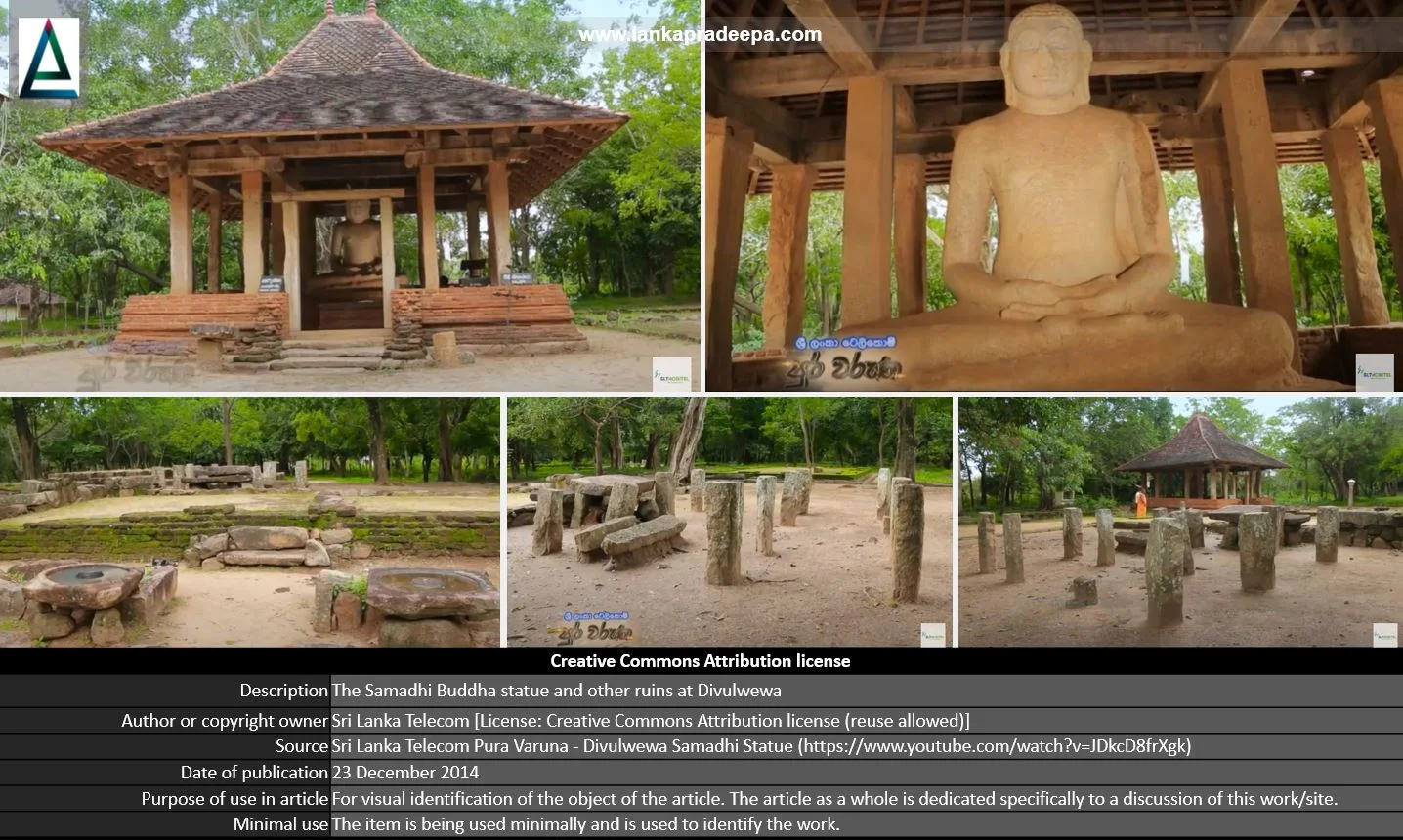
Divulwewa Monastery, also known as Divulwewa Archaeological Site or Komarikavala (Sinhala: දිවුල්වැව පුරාවිද්යා ස්ථානය), is a ruined Buddhist place of worship situated in Anuradhapura District, Sri Lanka. The site is popular among devotees for its sedent Buddha sculpted out of limestone.
History
The builder of the Divulwewa monastery is uncertain. It is believed to be one of the provincial temples built during the early Anuradhapura Period. Big as those in Abhayagiri and Pankuliya in Anuradhapura, the limestone Samadhi Buddha statue that was unearthed from this place is thought to be a work of the 3rd-4th centuries A.D. However, the megalithic burial site that was found in the vicinity of this monastery indicates that this area was a human settlement even before the Anuradhapura period.
A slab inscription belonging to the 6th-7th century A.D. that was discovered in the boundary wall of the monastery records the manumission of a slave (Uduwara, 1990). This probably took place in this monastery as it was considered an act of merit (Uduwara, 1990).
As revealed by studies, the temple has undergone renovations from time to time. The ruins of three image houses, one of the sedent image, the second of a later date and a Tempita Vihara (a temple on stone pillars) of the Kandyan Period were identified through excavations carried out in 1978 (Uduwara, 1990). Behind the central image house are the ruins of a stone structure, probably a Bodhighara (Uduwara, 1990).
References
1) Uduwara, J., 1990. History of the Department of Archaeology, 1970-1990. Archaeological Department Centenary (1890-1990): Commemorative series: Volume I: History of the Department of Archaeology. p.176.

